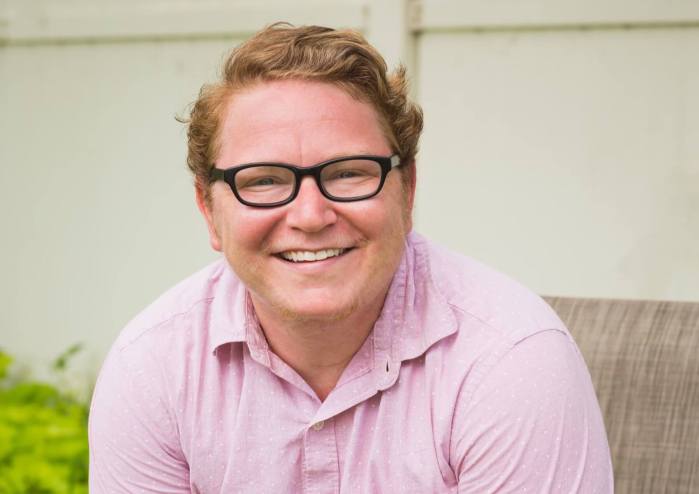The city health department was unusually cryptic last Thursday in the advisory it sent out alerting the press to an impending announcement about HIV/ AIDS the following day.
The news presented Friday, by Dr. Thomas Frieden, the commissioner of the Department of Health and Mental Hygiene, could scarcely have had more blockbuster potential, and the resulting scramble by the media to get the story out and dig up angles with which to illustrate it, predictably reawakened memories of early ‘80s hysteria.
We could all profit by stepping back, taking a deep breath and evaluating where we are on this story.
Frieden’s alert included three principle components. The first was that a newly infected gay man, with no previous HIV treatments that would have enabled his virus to build up resistance, presented a type of infection unresponsive to most of the available therapies. Second, the estimated time between the man’s infection and the onset of AIDS was unusually short, less than 18 months, perhaps as short as three or four months.
From the perspective of public health officials concerned about an incipient epidemic, however, a third characteristic about the man was perhaps the most troubling—he had recently been sexually active with many partners, a good number of them, like him, crystal meth users. This angle, of course, was the most compelling media hook, and many stories that emerged from the Friday press conference pointed to health department sources, unnamed, who indicated that the man had hundreds of sexual partners this past fall.
The full scenario that emerges not surprisingly alarms many people. A rapidly progressing, virulent strain of HIV, resistant to most, if not all available treatments, is loose among a network of gay men practicing unsafe sex with many partners while on drugs that are likely contributing to the breakdown of their immune systems already.
Each of these risks—rapid progression to AIDS, drug-resistant viral strains, unsafe sex fueled by drugs—has been discussed over and over again in our community, at times with a sense of frustration, even resignation. The combination of all of these factors in a single outbreak poses a chilling prospect.
It should come as a surprise to nobody who has lived through the past 24 years that this potential crisis raises the prospect of needless over-reaction, of a return to the blame game, to scapegoating and to stigmatizing. We’ve seen signs already that some in the press may be unable to resist the temptation to find a villain in this piece.
Unfortunately, it is also inevitable that there will be a strong measure of denial in our own community that the risks suggested last week may very well in fact be real. Gay men chatting on the Web and hanging out in Chelsea spots have been quoted saying this is all a conspiracy to suppress anal sex among men.
We should give credit where it is due. Frieden reached out to major AIDS and gay groups in putting together last Friday’s announcement. Throughout the ‘80s, the chief complaint of gay activists was not that government was overly intrusive on the matter of AIDS, but rather that it wasn’t doing enough, whether it was the administration of Mayor Ed Koch or Pres. Ronald Regan. Our worst nightmares may have included barbed wires; our fate, instead, was sealed by official neglect.
The city health department was faced with a very troubling picture, and they decided to get the information out. The news could well have a salutary effect in finding out whether there are other newly infected men out there in the same boat described last week.
That is not so say that the health department has done everything it needs to do, not by a long shot.
Perhaps the most significant unanswered question is when the man in question became infected. Press reports have suggested that he acquired the virus as recently as this past October, which would point to a staggeringly quick progression to AIDS by January. But the information released to date allows for no more specific conclusion than that he was infected between May 2003 and November 2004.
Dr. Robert Gallo, a renowned researcher in the field, has also raised questions as to whether the diagnosis of AIDS might be in error, mistaking the high viral activity associated with recent infection for the onset of full-blown AIDS, two very different things.
Gallo’s challenge raises the stakes for the health department and for Dr. David Ho, head of the Aaron Diamond AIDS Research Center, who has been working with the city. After their initial round of interviews, Ho and city officials have been more circumspect, in the face of criticisms such as Gallo’s.
The city’s initial instincts were correct. Now is the time for full disclosure, for each of the players to lay their cards on the table, for a full airing of the issues in question. Rather than speculating on the front page of The New York Times about vaguely-framed, but ominous-sounding “radical interventions,” we as a community and as AIDS activists should demand that public officials and scientists get the full story out as soon as practicable.
Editor’s Clarification: In the Feb. 10-16 issue, Stefen Styrsky’s "Changes at Top of Human Rights Campaign," while noting that a December New York Times article suggested that HRC might back off the fight for marriage equality in exchange for concessions on other gay rights issues, failed to note a subsequent Times correction saying that leaders of the group acknowledged a need to moderate their tactics but not the pursuit of their fundamental goal of full equality.
WRITE US!
Please address letters to the editor to:
Editor@gaycitynews.com
Or fax them to 646-452-2501
Or mail them to 487 Greenwich St., Suite 6A, New York City 10013.
Please include your phone number, for confirmation purposes only.
The editors reserve the right to edit all letters due to space constraints.
MCC’s Rev. Pat Bumgardner marries four couples in protest of Bloomberg legal appeal
gaycitynews.com






























